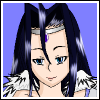Multics
Multics was a highly ambitious OS developed jointly by Bell Labs, General Electric, and the Massachusetts Institute of Technology. The goal was to create a computer that worked as a water or electric utility does; a central mainframe which thousands of users would have access to. Because of this, stability and security were the main focus.
Built on machines running CTSS, development of Multics began in 1964; but a fully working system was not released until 1969.
Multics was plagued by complexity from the start, and at many points became almost too expensive and difficult to continue development. Bell Labs dropped out of the project in 1969, and GE's computer business was bought by Honeywell in 1970. While largely a commercial disappointment, Multics implemented many novel ideas which went on to influence other, more popular, systems; most notably Unix. Many of Multics' features can be seen OS design to this day.
In November of 2007, Multics was open sourced by Groupe Bull; while there is not a computer running that could support Multics, a project to build an emulator is currently happening.
Multics-tan (or Multics-sama, an honorific denoting high social rank) is depicted as a mature woman, with aqua blue eyes and long, dark, bluish or purple hair. She is of average-tall height, and has wings covered in gray-with-black-tipped feathers. A reference to Multics' elegant, complex design, Multics-sama wears beautiful gowns and expensive jewelry, usually featuring a mix of Victorian, Roman, and Indian designs. A recurring theme in her design is circles and rings, a reference to the ring security feature Multics popularized.
